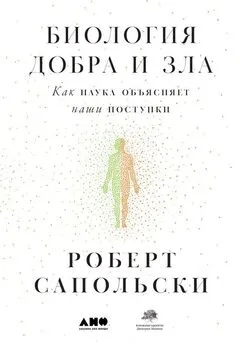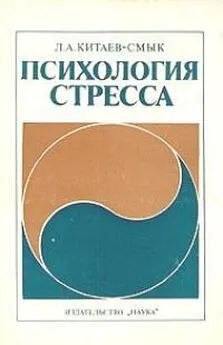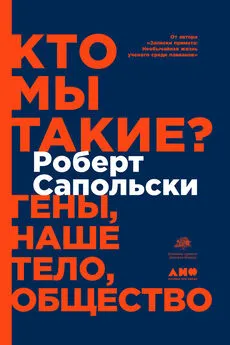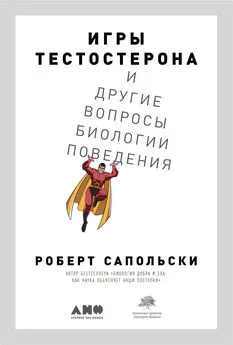Роберт Сапольски - Психология стресса
- Название:Психология стресса
- Автор:
- Жанр:
- Издательство:Питер
- Год:0101
- ISBN:нет данных
- Рейтинг:
- Избранное:Добавить в избранное
-
Отзывы:
-
Ваша оценка:
Роберт Сапольски - Психология стресса краткое содержание
Психология стресса - читать онлайн бесплатно ознакомительный отрывок
Интервал:
Закладка:
Приобретенная беспомощность может быть ослаблена с помощью депрессантов или ЭСТ: Dorworth, T., and Overmier, J., “On learned helplessness: the therapeutic effects of electroconvulsive shocks,” Physiological Psychology 5 (1977): 355; Leshner, A., Remler,
H. , Biegon, A., and Samuel, D., “Desmethylimipramine counteracts learned helplessness in rats,” Psychopharmacology 66 (1979): 207; Petty, F., and Sherman, A., “Reversal of learned helplessness by imipramine,” Communications in Psychopharmacology 3 (1980): 371; Sherman, A., Allers, G., Petty, F., and Henn, F., “A neuropharmacologically-relevant animal model of depression,” Neuropharmacology 18 (1979): 891.
С. 345. Внутренний локус контроля как средство защиты: Maciejewiski et al., “Selfefficacy as a mediator,” op. cit.
С. 345. Rozin, P., Poritsky, S., and Sotsky, R., “American children with reading problems can easily learn to read English represented by Chinese characters,” Science 171 (1971): 1264.
C. 346. Ранняя потеря родителей повышает риск юношеской депресии: эта тема рассматривается в Breier, A., Kelso, J., Kirwin, P., Beller, S., Wolkowitz, O., and Pickar,
D. , “Early parental loss and development of adult psychopathology,” Archives of General Psychiatry 45 (1988): 987; Amato, P., Keith, B., “Consequences of parental divorce for the well-being of children: a meta-analysis,” Psychological Bulletin 110 (1991): 26; Gutman, D., Nemeroff, C., “Persistent CNS effects of an adverse early environment: clinical and preclinical studies,” Physiology and Behavior 79 (2003): 471.
С. 349. Стресс истощает запасы норадреналина в мозге, но также повышает активность тирозин гидроксилазы: Stone, E., and McCarty, R., “Adaptation to stress: tyrosine hydroxylase activity and catecholamine release,” Neuroscience and Biobehavioral
Reviews 7 (1983): 29. Глюкокортикоиды имеют к этому какое-то отношение: Dunn,
A. , Gildersleeve, N., and Gray, H., “Mouse brain tyrosine hydroxylase and glutamic acid decarboxylase following treatment with adrenocorticotropic hormone, vasopressin or corticosterone,” Journal of Neurochemistry 31 (1978): 977. Кроме того, к этому может иметь какое-то отношение КРГ: Ahlers, S., Salander, M., Shurtleff, D., and Thomas, J., “Tyrosine pretreatment alleviates suppression of schedule-controlled responding produced by CRF in rats,” Brain Research Bulletin 29 (1992): 567; Sabban and Kvetnansky, “Stresstriggered activation,” op. cit.
С. 350. Glatz et al., “Glucocorticoid-regulated human serotonin transporter,” op. cit.; Koch, C., Stratakis, C. “Genetic factors and stress,” in Fink, G., ed., Encyclopedia of Stress, vol. 2: 205.
Глава 15. Личность, темперамент и их влияние на стресс
С. 353. Индивидуальные особенности животного: Koolhaas, J., Korte, S., De Boer, S., Van der Vegt, B., Van Reenen, Hopster, H., De Jong, I., Ruis, M., Blokhuis, H., “Coping styles in animals: current status in behavior and stress-physiology,” Neuroscience and BiobehavioralReview 23 (1999): 925. Обзор индивидуальных характеристик приматов см. в Clarke, A., and Boinski, S., “Temperament in nonhuman primates,” American Journal of Primatology 37 (1995): 103. Индивидуальные характеристики рыбы- солнца: Wilson, D., Coleman, K., Clark, A., and Biderman, L., “Shy-bold continuum in pumpkinseed sunfish (Lepomis gibbosus): an ecological study of a psychological trait,” Journal of Comparative Psychology 107 (1993): 250. Индивидуальные характеристики гусей: Pfeffer, K., Fritz, J., Kotrschal, K., “Hormonal correlates of being an innovative greylag goose, Anser anser,”Animal Behavior 63 (2002): 687.
С. 354. Бабуины, индивидуальность и психология: Sapolsky, R., and Ray, J., “Styles of dominance and their physiological correlates among wild baboons,” American Journal of Primatology 18 (1989): 1; Ray, J., and Sapolsky, R., “Styles of male social behavior and their endocrine correlates among high-ranking baboons,” American Journal of Primatology 28 (1992): 231; Sapolsky, R., “Why should an aged male baboon transfer troops?” American Journal of Primatology 39 (1996): 149; Virgin, C., and Sapolsky, R., “Styles of male social behavior and their endocrine correlates among low-ranking baboons,” American Journal of Primatology 42 (1997): 25. Также см. Suomi, S., “Early determinants of behaviour: evidence from primate studies,” British Medical Bulletin 53
(1997) : 270.
С. 359. Прежде чем браться за вопрос о том, какие типы личности связаны с конкретными типами реакции на стресс, необходимо выяснить, существуют ли устойчивые индивидуальные различия в особенностях реакции на стресс у людей. Эта тема раскрывается в Cohen, S., and Hamrick, N., “Stable individual differences in physiological response to stressors: implications for stress-elicited changes in immune related health,” Brain, Behavior, and Immunity 17 (2003): 407. Наиболее подробный обзор литературы по психогенным причинам выкидышей см. в Huisjes, H., Spontaneous Abortion (New York: Churchill Livingstone, 1984).
С. 361. Я отсылаю читателя к главе 13, где имеется информация о когнитивном и эндокринном профиле депрессии.
С. 362. Обзор стресса и тревоги: Ohman, A., “Anxiety,” in Fink, G., ed., Encyclopedia of Stress (San Diego: Academic Press, 2000), vol. 1: 226. Тревога и катехоламины: Friedman, B., Thayer, J., Borkovec, T., Tyrrell, R., Johnson, B., and Columbo, R., “Autonomic characteristics of nonclinical panic and blood phobia,” Biological Psychiatry
34 (1993): 298. Обсуждение дихотомии между стремлением справиться с проблемой (сопровождаемым выделением катехоламина) и отказом от борьбы (характеризующимся повышенным выделением глюкокортикоидов) см. Frankenhaeuser, M., “The sympathetic-adrenal and pituitary-adrenal response to challenge,” in Dembroski, T., Schmidt, T., and Blumchen, G., eds., Biobehavioral Basis of Coronary Heart Disease (Basel: Karger, 1983): 91. Сокращение срока жизни у встревоженных крыс: Cavigelli,
S., and McClintock, M., Proceedings of the National Academy of Sciences, 100 (December 2003). Цитата в сноске взята из Aragno, A., Forms of Knowledge: A Psychoanalytic of Human Communication (Madison, Conn.: International Universities Press, 2004).
С. 363. Модели тревоги у животных: Davis, M., “Functional neuroanatomy of anxiety and fear: a focus on the amygdala,” in Charney, D., Nestler, E., and Bunney, B., Neurobiology of Mental Illness (New York: Oxford University Press, 1999): 463.
С. 365. McGaugh, J., Memory and Emotion (New York: Weidenfeld and Nicolson, 2003); Roozendaal, B., “Glucocorticoids and the regulation of memory consolidation,” Psychoneuroendocrinology 25 (2000): 213-38.
С. 365. Учащенное сердцебиение перед сознательным умозаключением: Dolan, R., “Emotion, cognition and behavior,” Science 298 (2002): 1191. Симпатическая нервная система влияет на миндалевидное тело: Critchley, H., Mathias, C., and Dolan, R., “Fear conditioning in humans: the influence of awareness and autonomic arousal on functional neuroanatomy,” Neuron 33 (2002): 653-63.
С. 366. Сноска. Удивительное открытие о связи между расой и работой миндалевидного тела: Hart, A., Whalen, P., Shin, L., McInerney, C., Fischer, H., and Rauch, S., “Differential response in the human amygdala to racial outgroup vs ingroup face stimuli,” NeuroReport 11 (2000): 2351; Golby, A., Gabrieli, J., Chiao, J., and Eberhardt, J., “Differential responses in the fusiform region to same-race and otherrace faces,” Nature Neuroscience 4 (2001): 845. Внимательные читатели последней статьи заметят, что в действительности активируется не само миндалевидное тело, а связанная с ним область, которая активно реагирует на выражения лица.
С. 367. Люди с нарушениями, вызванными тревогой, замедляются еще больше: Ohman, op. cit.
С. 367. Миндалевидное тело становится гипервозбудимым: Karst, H., Nair, S., Velzing, E., Rumpff-van Essen, L., Slagter, E., Shinnick-Gallagher, P., and Joels, M., “Glucocorticoids alter calcium conductances and calcium channel subunit expression in basolateral amygdala neurons,” European Journal of Neuroscience 16 (2002): 1083-89; Diamond, D., Park, C., Puls, M., and Rose, G., “Differential effects of stress on hippocampal and amygdaloid LTP,” в Holscher, C., Neuronal Mechanisms of Memory Formation (New York: Cambridge University Press, 2001): 379. Новые связи: Vyas, A., Mitra, R., Rao, B., and Chattarji, S., “Chronic stress induces contrasting patterns of dendritic remodeling in hippocampal and amygdaloid neurons,” Journal of Neuroscience 22 (2002): 6810. Как сделать миндалевидное тело крысы более возбудимым: Rosen, J., Hammerman, E., Sitcoske, M., Glowa, J., and Schulkin, J., “Hyperexcitability and exaggerated fear-potentiated startle produced by partial amygdala kindling,” Behavioral Neuroscience 110 (1996): 43; LeDoux’s model: LeDoux, J., The Emotional Brain (New York: Simon and Schuster, 1996).
С. 368. Тип А: определяющее проспективное исследование, показывающее связь между личностью Типа А и коронарной болезнью сердца см. в Rosenman, R., Brand, R., Jenkins, C., Friedman, M., Straus, R., and Wurm, M., “Coronary heart disease in the Western Collaborative Group Study: final follow-up experience of 812 years,” Journal of the American Medical Association 233 (1975): 872. См. также Friedman, M., and Rosenman, R., Type A Behavior and Your Heart (New York: Knopf, 1974). Авторитетная комиссия, поддерживающая концепцию Типа А, опубликовала этот отчет в Cooper, T., Detre, T., and Weiss, S., “Coronary prone behavior and coronary heart disease; a critical review,” Circulation 63 (1981): 1199.
Проблемы с повторением оригинального открытия Типа А: наиболее ценным считается исследование Shekelle, R., Billings, J., and Borhani, N., “The MRFIT behavior pattern study. II. Type-A behavior and incidence of coronary heart disease,” American Journal of Epidemiology 122 (1985): 599. Другие результаты обсуждаются в Barefoot, J., Peterson, B., Harrell, F., et al., “Type A behavior and survival: a follow-up study of 1,467 patients with coronary artery disease,” American Journal of Cardiology 64 (1989): 427.
Читать дальшеИнтервал:
Закладка:

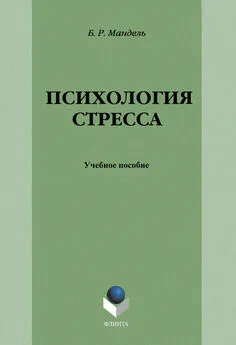
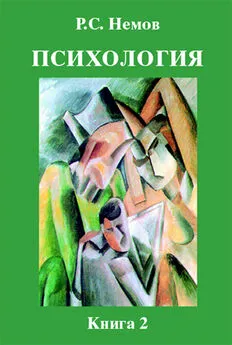
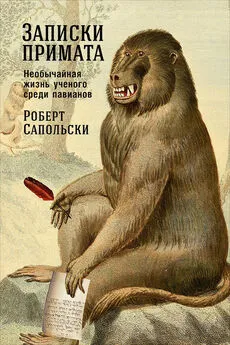
![Роберт Сапольски - Игры тестостерона и другие вопросы биологии поведения [litres]](/books/1074102/robert-sapolski-igry-testosterona-i-drugie-vopros.webp)
